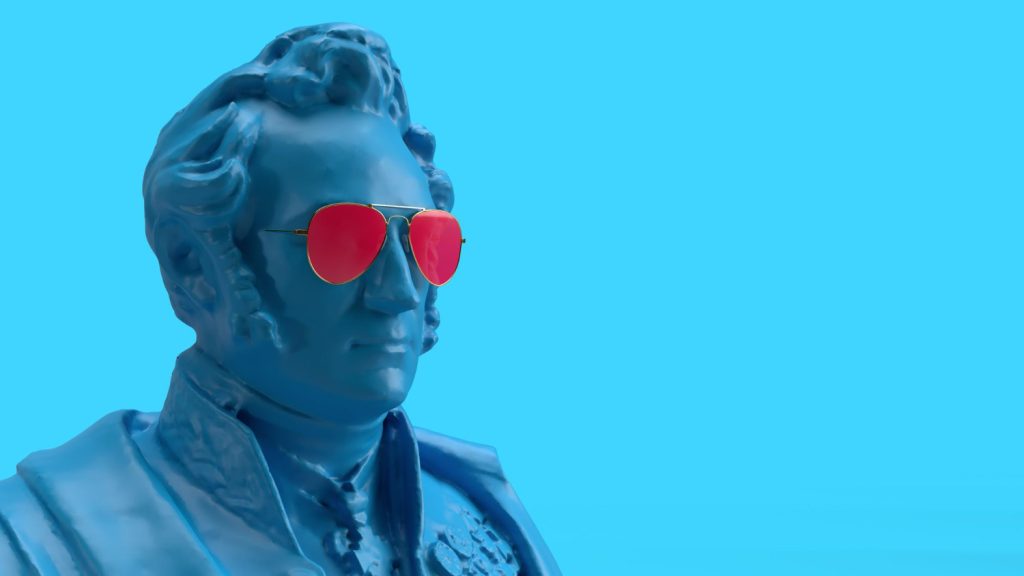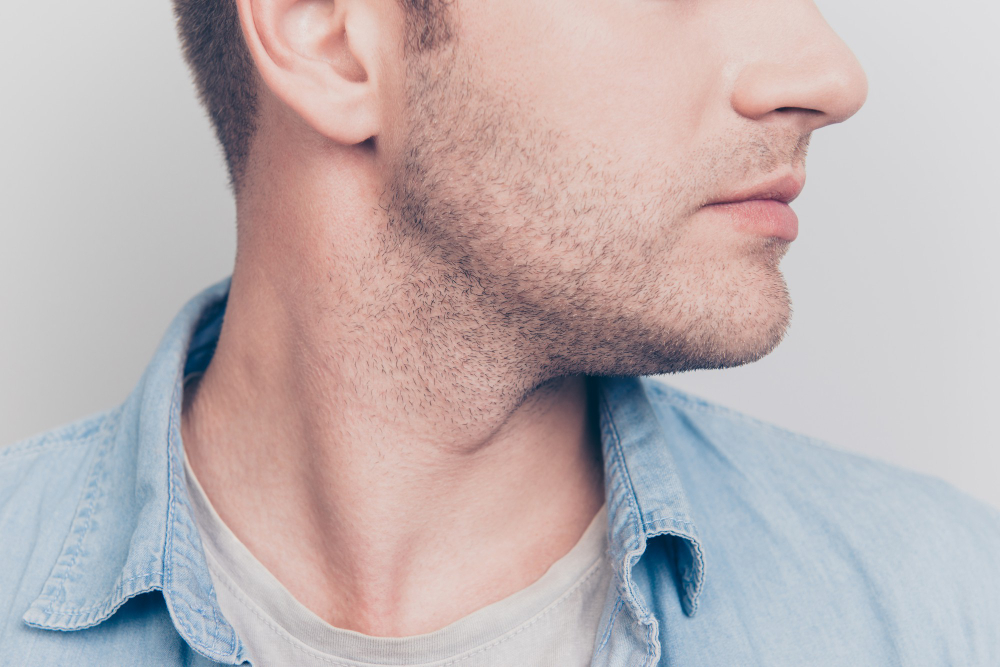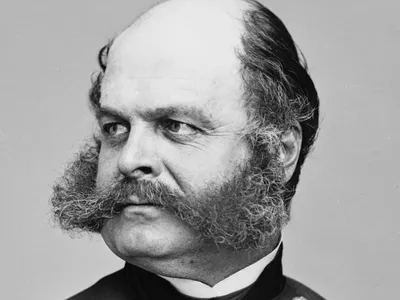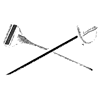Sideburns: The Definitive Trim & Style Guide

Sideburns, the overlooked component in many men’s grooming routine, are a potent tool to craft a signature look. This article will delve into the wide world of sideburns, uncovering their impact on style, tips for their growth, and maintenance.
Sideburns first became popular in the 19th century, marking their place in grooming history. Immerse yourself in this ultimate style guide and discover how to grow, trim, and style your sideburns for the perfect groomed appearance.
Key Takeaways
- Sideburns men wear shape their overall look by framing the face and balancing facial features, with styles chosen based on face shape and hair growth patterns.
- Regular trimming and maintenance using tools like trimmers or razors keep sideburns neat, with tapering ensuring a smooth transition to head hair.
- Different sideburn styles—from short sideburns to bold mutton chops—offer versatile options that complement various beard styles and personal preferences.
Table of Contents
What are sideburns?
Sideburns are patches of facial hair that grow on the sides of a man’s face, in front of the ears and downward, to the corners of the mouth. The term sideburns originated from Ambrose Burnside, a 19th-century American Civil War general, and has since carried cultural significance as a symbol of masculinity, rebellion, and shifting fashion trends throughout history.
In the mid-19th century, sideburns were a fashion trend among elites in Western culture. The length, thickness, and style of sideburns can vary widely. In grooming discussions, sideburns are sometimes referred to as ‘side burns’, and proper trimming and styling techniques are emphasized to achieve a polished appearance.
They are usually shaped and trimmed with a razor or electric shaver. They act as a bridge, visually linking the hairline and the beard. Appropriately styled sideburns can add a heightened sense of sophistication to the overall look.
Historically, sideburns were also known as ‘side whiskers’, a term that reflects their evolution and the various styles and nicknames associated with this facial hair trend.
Role of sideburns in shaping your face
Believe it or not, sideburns can be employed to manipulate the perceived shape of your face. Long sideburns elongate the face while short sideburns give the illusion of width. Mid-point sideburns are ideal for oval, oblong, or diamond-shaped faces.
Longer sideburns can also help visually narrow a square face and define the jawline. Using this knowledge, you can style sideburns that best complement your facial structure.

Different sideburn styles to consider
From long and bushy burnsides reminiscent of Civil War General Ambrose Burnside, to neat trim sideburns of the 21st century, there is a sideburn style for every face shape. From the 1950s to the 1970s, sideburns saw a resurgence as part of rebellious fashion trends.
Large sideburns are a bold facial hair style that can make a strong statement, but they require careful maintenance to keep them looking sharp.
Regardless of whether you’ve got a full beard or a clean-shaven face, well-styled sideburns can help you stand out from the crowd and are an important part of the ever-evolving world of facial hair styles and trends. However, sideburns remain less popular in modern men’s fashion compared to clean-shaven and fully-bearded looks.
Understanding facial hair
Facial hair is as unique as the individual sporting it, and understanding your own hair’s characteristics is the first step to mastering the art of sideburns. The way your facial hair grows—its thickness, direction, and speed—can have a major impact on how you style sideburns and which sideburn styles will look best on you.
Beard trimmers often have different length settings for custom sideburn styling. Whether you’re aiming for bold sideburns, classic mutton chops, or a subtle, clean cut look, knowing your hair’s tendencies will help you achieve a polished and flattering result.
How facial hair growth patterns affect sideburns
Every man’s facial hair tells a different story, and these growth patterns play a crucial role in shaping your sideburn style. Some men experience rapid hair growth, requiring frequent trimming to keep sideburns neat, while others may find their sideburn hair grows more slowly, allowing for longer intervals between trims.
Measuring the evenness of your sideburns with your fingers helps to assess their symmetry and maintain a balanced look. The density and direction of your hair growth also influence how you maintain and style sideburns—straight hair often appears more uniform and is easier to shape, while curly or wavy hair may need extra attention to prevent unevenness or stray hairs.
Choosing the right sideburn length and style depends not only on your hair growth but also on your face shape and overall hairstyle. For example, men with round faces often benefit from shorter sideburns to add definition, while those with square faces can experiment with longer sideburns for a more balanced look.
If you’re growing a full beard or sporting mutton chops, it’s important to blend your sideburns seamlessly into your facial hair for a cohesive appearance. Using a beard brush can help keep your sideburn hair healthy and tangle-free, especially if you’re aiming for bold sideburns or a more dramatic sideburn style.
Trimming sideburns regularly is key to maintaining a clean cut look, but the frequency and technique will depend on your unique hair growth. Men with thicker or faster-growing hair may need to trim more often to prevent excess hair from disrupting their desired style, while those with finer hair can focus on shaping and maintaining the outline.
No matter your hair type, always trim in the direction of hair growth for the smoothest results, and use your facial features as a guide to achieve symmetry and balance.
Ultimately, understanding your facial hair growth patterns empowers you to choose and maintain the best sideburn style for your look. Whether you prefer a subtle trim, a bold mutton chop, or a style that complements your goatee or full beard, tailoring your approach to your hair’s natural tendencies will help you wear sideburns with confidence and style.
How to grow sideburns properly?
Tips to get robust sideburn growth
Patience is key when growing out sideburns. Don’t be afraid if the hair in front of your ears seems to grow slower than other regions; this is normal. Sideburns can take up to six weeks to grow, but noticeable growth should appear by the third or fourth week. Encourage healthy hair growth by maintaining a balanced diet and staying hydrated. Regularly brushing with a beard brush can help stimulate better growth.
Managing hair growth for fuller sideburns
While growing your sideburns, it’s crucial to keep the region clean and rid of dead skin. A diligent men’s grooming routine will help reduce any itchiness and will ensure your sideburns grow out healthy and full.
Strategies to grow sideburns while maintaining a groomed look
Even while growing out your sideburns, you can still maintain a neat appearance. Gently comb your sideburns, shape them as desired, and trim hairs that stray from your sideburn area to achieve a clean, groomed look during the growth phase. Making small adjustments—a bit of trimming here and there—can help maintain a balanced look as your sideburns grow.
How to trim and style sideburns?
Trimming sideburns: Tools and techniques
Whether you use a razor or a trimmer, make sure your tool is sharp to produce clean, even lines. To achieve clean edges or specific styles, carefully shave along the outline of your sideburns. Some styles may require the area between the ear and head to be shaved for a crisp, defined look.
Start trimming from your ear downwards, ensuring the sideburn length complements your overall style and balances with the hair on your head. For a seamless transition, blend your sideburns with your head hair. Always trim your sideburns when they’re dry, as wet hairs tend to look longer than they actually are.
How to style sideburns for your face shape?
Square or round faces usually work best with medium length sideburns that end around the middle of the ear, while long faces can be balanced with shorter sideburns. Ultimately, the rule is to style sideburns in a manner that best accentuates your features.
Tapering your sideburns for a seamless look
For a smooth transition from your hairstyle to your sideburns, consider tapering them; this means gradually reducing the sideburn length as it trails down your face. This can provide an effortless and sleek look to any beard or hairstyle.
Common sideburn styles and how to achieve them
Short sideburns: Achieving a classic look
Short sideburns are timeless and will never go out of style. To achieve them, all you need is a sharp razor or trimmer and a steady hand. Simply trim your sideburns to a length that ends at the top of your ear hole.

Mutton chops sideburns: Sport the Ambrose Burnside style
Inspired by Civil War General Ambrose Burnside, mutton chop sideburns are a bold move deserving of respect. Allow your sideburns and facial hair to grow out, trimming away your moustache and chin hair. This look isn’t for the faint-hearted but can add an undeniable statement to your beard style.

The sideburns and whiskers: A new trend in facial hair?
Demonstrating the versatility of sideburn styles, the pairing of sideburns and whiskers is seeing increasing popularity. This look involves pairing elongated sideburns with a moustache and goatee, harkening back to 19th-century men’s facial hairstyles with a refreshing modern twist.

Sideburns maintenance: Tips and Tricks
How to keep your sideburns neat and groomed?
Regular trimming keeps your sideburns looking fresh and well taken care of. Use a small comb to brush the hairs downwards before trimming to ensure evenness. Regular trimming with clippers every 3 to 5 days maintains sharp sideburns depending on your facial hair growth rate. Always keep an eye on the area around the ear as stray hairs can impact the neatness of the look.
Grooming sideburns: tackling the areas around the ear and cheek
To maintain a clean-cut look, tidy up the areas around the ear and cheek regularly. Let the line from your outer eye corner to your earlobe define the limit of your sideburn growth. This will prevent your hairstyle from merging into your beard.
Razor or Trimmer: The best tool for maintaining sideburns
When it comes to the best tool for maintaining sideburns, both razors and trimmers have their benefits. While a razor can provide a closer trim, a trimmer could offer more control over length and shaping. Therefore, choose the tool that suits your sideburn style and comfort level the best.
Sideburns are an impactful feature of your personal style
Sideburns are a versatile and impactful element of men’s grooming that can significantly enhance one’s appearance. Whether opting for short, classic sideburns or bold mutton chops, the right style can complement and balance facial features effectively. Washing your facial hair and applying beard oil or balm conditions the hair and skin after styling.
Proper growth and maintenance, including regular trimming and grooming, are crucial for keeping sideburns looking their best. By paying attention to these details, one can achieve a polished, sophisticated look that stands out. Embrace the power of sideburns to refine and elevate your personal style.

You might like these!



